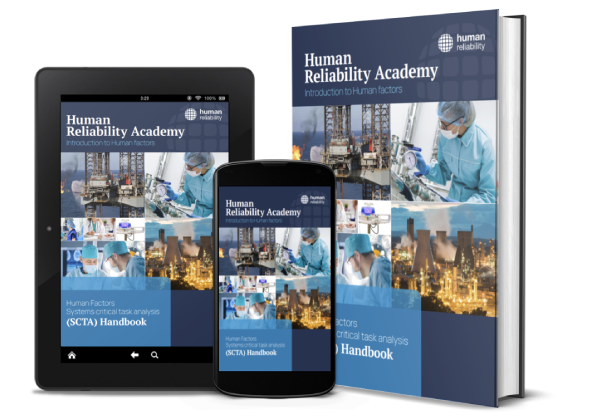Turnarounds (TARs) are planned events where significant sections of a process plant are shut down to enable maintenance or projects to be carried out. Despite being planned events, they are inherently non-routine and resource intensive.
At the Hazards 31 conference, our senior consultants, Jamie Henderson and Richard Marshall, shared insights from their in-depth Human Factors review of TAR activities—highlighting why these periods demand focused attention from HF professionals.
Their findings echoed a recurring theme across industry: while technical and engineering risks tend to receive significant attention during TARs, Human Factors challenges are often under-appreciated.
Why TARs Pose Unique Human Factors Challenges
TARs are high-stakes events. They involve significant changes to the normal operating conditions of a plant, disrupting steady-state processes and introducing a higher risk of process safety incidents. Several factors contribute to this:
- Tasks are non-routine and infrequent. Even experienced staff may not have performed these activities in years.
- High workload and complexity strains both personnel and systems.
- Time pressure driven by the desire to resume production can compromise safety.
- Third-party contractors’ involvement add complexity to communication and coordination.
- Simultaneous operations make it difficult to maintain shared situational awareness.
These realities highlight why TARs require not just technical precision, but also strong Human Factors strategies.
A Safety Critical Task Analysis (SCTA) Approach
To support the planning of a major TAR at a large COMAH facility, the HRA team applied a structured SCTA process to assess critical shutdown and start-up activities. This process focused on understanding:
- Where the human failures could occur
- What the potential consequences would be
- Which Performance Influencing Factors (PIFs) could make those failures more likely
- How existing procedures and systems could be strengthened to reduce risks
Although the review began as a focused assessment of site-specific tasks, a pattern quickly emerged. Many of the issues identified were systemic and they had implications for TARs across the industry.
The findings were distilled into a set of key Human Factors considerations applicable to any complex maintenance event.
Key Findings and Lessons Learned
1. Planning and Tracking Progress
TARs rely heavily on procedures, yet many of those in use had not been written with TAR conditions in mind. For example, some assumed preconditions or resource availability that didn’t apply during a shutdown. In other cases, tasks were considered “complete” even though important follow-up actions (e.g. a flow purge left running) remained.
What helps:
- Use of visual planning tools (like Gantt-style charts) to track progress and raise awareness across teams.
- Reviewing procedures ahead of time to adjust preconditions and clarify responsibilities.
- Planning sign-offs in line with actual staffing—e.g. ensuring someone authorised to sign off is available at all times.
2. Procedures and Role Clarity
Procedures are critical during TARs, and they need to be practical and easy to follow under pressure. Poorly sequenced steps, ambiguous instructions, or unclear responsibilities increase the risk of omissions or shortcuts.
What helps:
- Grouping steps under logical sub-goals (e.g. purge feed line, depressurise vessel) to support navigation and shift handovers.
- Clarifying what type of checks are required from the operators: visual, paperwork, or both.
- Minimising unnecessary physical effort, e.g. repeated climbs up and down equipment can lead to fatigue and shortcuts.
3. Competence and Critical Understanding
While seasoned operators have strong technical skills, if they haven’t participated in a TAR for several years, specific situational awareness, especially regarding Major Accident Hazards risk, may have faded.
What helps:
- Delivering focused pre-task briefings for high-risk tasks, particularly where start-up conditions differ from normal operations.
- Highlighting critical actions that have MAH potential (e.g. repressurising systems too quickly).
- Providing decision-making support for tasks that may require more judgement than usual.
4. Purging and Testing
Purging is an essential part of making systems safe for access. However, procedures varied in format and clarity, and some relied on subjective assessments (e.g. checking by smell), increasing the risk of misinterpretation or missed steps.
What helps:
- Standardising purge procedures, including why a specific purge type is required.
- Being explicit about duration, injection points, test types, and whether systems should be left under pressure.
- Specifying where and how gas and oxygen tests should be carried out—and ensuring there are spaces in procedures to record results.
5. Control of Work and Isolation Management
TARs relies heavily on Control of Work (CoW) systems. Isolation certificates, permits, and lock-out/tag-out procedures must be managed at greater scale and under more complex conditions.
- Reviewing CoW processes to identify where adaptations are needed for TAR conditions.
- Ensuring isolation boundaries and responsibilities are clearly defined.
- Considering independent verification for reinstatement of critical systems (e.g. relief valves or blinds).
Lessons Learned
One of the most valuable takeaways from this review was the importance of timing. The best time to conduct Human Factors assessments for a TAR is not during mobilisation, but months earlier, when there is still scope to influence procedures, training, and resourcing.
In this case, early HF involvement meant that specific risks could be identified and addressed ahead of time. It also allowed for the development of a reusable checklist of TAR-related HF issues, providing value for the site for future TARs.
Conclusion
Turnarounds are well-known periods of increased risk. While technical and engineering aspects remain vital, Human Factors play an equally important role in ensuring a safe and efficient TAR.
Through the structured application of SCTA, the team was able to uncover latent HF issues, many of which would not be visible through traditional risk assessments. By addressing these in advance, the site not only strengthened its TAR readiness but also improved the resilience of its people and processes.
Further information
This work was originally presented by Jamie Henderson and Richard Marshall at HAZARDS 31 in 2019. If you would like to view the paper, you can download the paper here along with our other HAZARDS conference presentation.
If you’re looking for Human Factors support on your next TAR or high-risk project, our team of consultants is here to help. Get in touch via [email protected]
With decades of experience, Human Reliability’s human factors consultancy can protect the organisation from critical risks and help achieve quality, safety and productivity goals: https://www.humanreliability.com/human-factors-consultancy/














